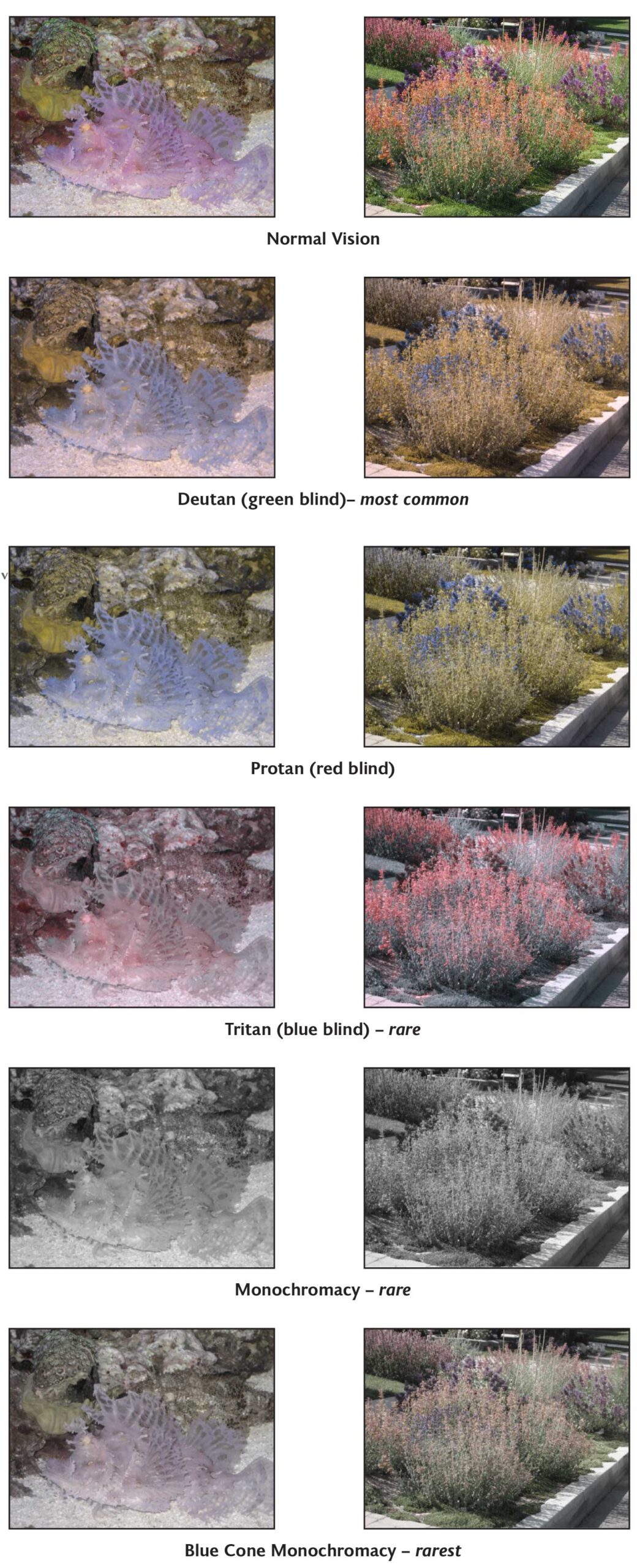Blog
Return to Blog »
Janis Kent, Architect, FAIA, CASp © October 2023 Color Vision Deficiency (CVD), more commonly known as color blindness, is something not commonly discussed when we talk about disabilities, but there are some items to be aware of when designing environments as well as with signage. CVD affects about 8% of the male population but only about .5% of the female. This can also vary by population. Such as in Scandinavia, it is a higher prevalence with about 10% to 11% of the male population, and in Sub-Saharan Africa, the prevalence is very low with very few people having CVD. An interesting item to note is that people with CVD also have better night vision. There are 4 types of color deficiency. 3 types have a weak color recognition versus being fully deficient for that color. Red (Protan), green (Deutan), or blue (Tristan). The 4th type is very rare with Blue cone monochromacy (where only certain shades of blue are visible, and sometimes yellow) the rarest, and total color blindness where you see just greys (Monochromacy). Not being able to easily differentiate colors can affect you in terms of clothing choices, or marketing for fresh produce. It can also have an impact on traffic lights for driving and crossing streets as a pedestrian, depending on the type of CVD. Some job types may be difficult or not possible such as electrical with color coding on wiring, or designing with color, or even evaluating health for medical. As previously noted some people with CVD have better night vision. The ability to differentiate khaki colors and neutrals might be easier for those with green or red deficiency which could be helpful to see through camouflage and was actually made use of in WWII. Also, patterns and textures can be more easily differentiated without color interfering. So there is some benefit, albeit minor, as well. If designing signs, or anything for that matter, be aware of how CVD can affect perception. Consideration should be given to providing a light-to-dark contrast in addition to a color contrast. There are several online CVD simulators, which are free, where you can input an image to simulate the different types. This is the one I used, but there are others as well. https://pilestone.com/pages/color-blindness-simulator-1 If color is an important part of your design, you may want to try one of the simulators to better understand what the 10% of the population can see and whether the contrast works for those with CVD. And just as a note for dog lovers, the myth that dogs can not differentiate color is not true. Dogs have 2 cones in their eyes, not 3 like humans, and can differentiate blues, yellows, and some greys, but not reds, purples, oranges, or greens. Be aware that your local City or County may have additional requirements that are more restrictive than the State or Federal requirements. Also, this article is an interpretation and opinion of the writer. It is meant as a summary – current original regulations should always be reviewed when making any decisions. © Janis Kent, Architect, FAIA, CASp October 2023 .Color Vision Deficiency Known as Color Blindness

